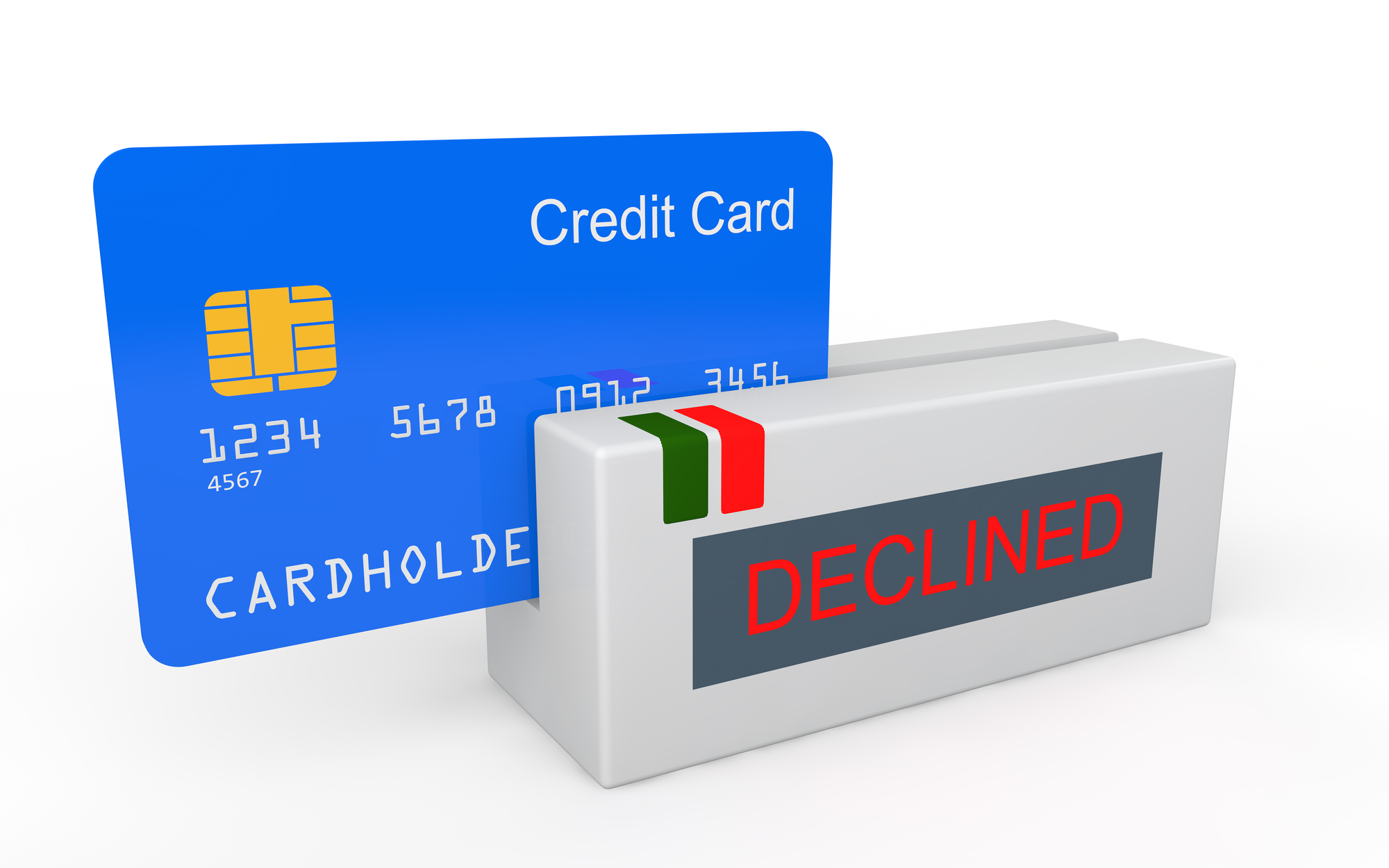
Transaction Approval Rate: Make More Money In 30 Days
Jun 30, 2020 7-MINUTE READ
Would you like to know how to increase your transaction approval rate to earn more revenue in 30 days or less?
Think about it.
If you’re generating $20,000 in sales each month right now but have hundreds of declined transactions, you could be missing out on thousands of dollars from people who want to buy your product or service.
You could finally say goodbye to rejected transactions. No hassles. No customers would think you’re a scam. Losing sales you’ve paid dearly in traffic to get would diminish every day.
The truth is, many high-risk merchants get charged a fee for each declined transaction.
You could raise your revenue by 10% or more by reducing declined transactions.
If you can relate to any of this…
We’re here to tell you it’s possible to increase your profit margins within 30 days or less.
So, if this piques your interest, keep reading to find out how you can improve your transaction approval rate and make this your most profitable year yet.
What is a transaction approval rate?
You might hear other people refer to the transaction approval rate as transaction success rate (TSR).
Either way, you can get both by calculating:
TOTAL # OF APPROVED TRANSACTIONS
TOTAL # OF ATTEMPTED TRANSACTIONS
Here’s an example…
If you process 1000 transactions and only 750 of them turn into sales, your transaction success rate is 75%.
Now, imagine if those 1000 transactions are worth up to a total of $75,000 in sales. That means you are losing $18,750.
In fact, you’ll be earning less than that.
Your payment providers deduct fees from your payment gateway and merchant account. This includes a cost for each declined transaction which could range anywhere from $0.20 to $2.50 per charge attempt.
How would that make you feel?
That’s why it’s important to see how much money you are losing. If you use the transaction approval rate to measure your success, it’ll be easier for you to test and optimize your payment processing.

It’s frustrating when potential customers change their minds about buying after their card gets declined. (Photo by Yan from Pexels)
Why the transaction success rate matters
This metric is crucial because it highlights how much money you’re losing after spending a lot to acquire a customer.
It’s frustrating when potential customers change their minds about buying after their card gets declined. And we know you might be thinking that there isn’t much you can do afterward…
But you can always find the root of the problem and prevent it from happening again.
There are multiple reasons a transaction gets declined. Sometimes the cardholder doesn’t have enough funds in their bank. And, that’s not your fault. Or, it’s possible that the transaction was rejected by the customers’ bank with little reason provided. Or, your buyer is in a different country using a card type not recognized by your payment provider.
If that’s the case, perform a sales audit. Look at the history of each lost sale and find out why they were declined.
Tracking this crucial data, will improve your chances of increasing your sales from your existing traffic. Also, you’ll save yourself from getting charged more merchant account fees for declined sales.
The surprising risks of payment processing
As you’re aware, mom and pop stores offline prefer customers pay with cash instead of a debit or credit card. This is because they want to avoid transaction fees. E-Commerce merchants don’t have this luxury.
Being an online seller means you cannot escape fees when a transaction happens regardless of whether it’s approved or declined, or even if it’s not your fault. By paying for a declined transaction, it’s a straight up loss.
What’s worse is that in the e-commerce world, chargebacks happen. The burden of paying for them falls on the merchant. Not only do you pay for declines, but you also lose if the customers issues a chargeback or refund.
According to Mastercard, “The [card-not-present] CNP channels are disproportionately impacted by false declines, with the average decline rate for a CNP transaction hovering around 15% to 20%, versus 2% to 3% for card-present transactions.”
These rates will vary, but there could be other penalty fees that add up too.
Too many chargebacks negatively affect merchant accounts
Excessive chargebacks, for example, have an impact on costs to operate an online business. When a customer has a complaint about the merchant or their product, they could call their bank to dispute a transaction. Then, the bank will initiate a chargeback to refund the customer’s money along with a fee whether or not a refund has already been issued by the vendor.
A high enough rate of chargebacks could result in getting MATCH-listed or TMF’d by the payment processor. It’s never fun when something like this happens.
As you can see, there are some risks involved by having your own merchant account.
To get your account to a low risk level, you’ll need to partner with experts in high-risk merchant accounts.
DirectPayNet is not your average merchant service provider. Secure a robust payment gateway and get help managing your payments channel. Connect with us today.
Why orders get declined
Even if you have a high-risk merchant account, you can still drive a higher transaction approval rate than anyone else in your industry.
We’ve seen high-risk categories, such as the supplements, financial and dating industry, achieve this.
These are some of the most common factors for a high decline rate:
- Card Type Rejected
- Cardholder’s Address does not match
- “Do Not Honor” Declines
- Expired cards
- Fraud/Risk Mitigation Tools
- Large Ticket Orders
- Incorrect Account Information
- Insufficient funds
- International Charges or Currency Does Not Match
- Technical Issues
Pay attention to the merchant category code
The merchant category code (MCC) is for credit card networks to identify the type of services the business offers.
This 4-digit number is used to track purchases and maximize credit card rewards. For example, your transaction description may show up as “grocery stores” after buying food at your local market.
The MCC could even prevent certain purchases like an unusual, large volume of orders. Because of this, it becomes a barrier to get more orders approved.
Finally, MCCs are associated with your business model. Merchants with online businesses in the gambling, gaming, supplements and adult entertainment market can’t escape this label.
Unfortunately, when some banks see your MCC, they automatically reject your orders. This is because some categories are rampant with fraud. Having a lower ticket for your product will result in more sales as banks see a low price as less risk for potential losses. Split test pricing to see where you get highest conversion while balancing chargebacks and refunds.
High-level solutions for high-risk merchants
Now that you know what affects a transaction approval rate, it’s time we go over some solutions that every merchant should apply.
There are tons of concrete solutions. But today, we’re only going over these three:
1. Payment Method Selection
Something as simple as displaying specific credit card logos can increase your total of approved transactions. Display the most updated Visa, Mastercard, American Express and Discover symbols in your footer and on your checkout page. This will show potential shoppers what card types you accept.
Don’t forget to include brands like Maestro. You should publish a disclaimer notifying your visitors that debit purchases from outside of your country are not accepted.
Unfortunately, EU banks will only approve EU debit transactions. The same goes for US banks only recognizing US debit purchases done locally. But, make this clear at your checkout. That way, customers will know whether you allow debit transactions and you will not be charged a fee because their attempt got declined.
If you want to improve your cross-border transaction approval rates, explore adding various currencies to your checkout page. Your sales conversions will increase if you charge the customer’s card in the same currency it is issued in.
2. Manage Update Notifications
Your customers’ credit card information might need to be updated from time to time. Their subscription renewal is coming soon, but are their card details still accurate?
For a successful rebill, you could notify them before the next charge. Even a simple email might be all that you need to avoid declined transactions.
Sign up for Visa Account Updater (VAU) and MasterCard Account Updater (MAU). This service updates card details automatically for expired cards or cards that have been replaced. It’s inexpensive and will increase customer lifetime value (CLV).
Enhance your checkout with an API response. Checkout sessions can be sophisticated if you develop them to respond to different buying scenarios. Telling your customers why their card was declined will help them be successful at their next attempt to buy from you.
3. Implementing 3D-Secure
By now you’re probably already familiar with how 3D-secure (3DS) works. If you’ve been asked to complete additional verification when shopping online this is it. As you’re aware, this is what’s known as a secure pop-up registering more data. Some newer 3DS providers are able to authenticate the transaction without any friction to the customer.
A strong customer authentication (SCA) often relies on 3DS. This is so that the buyer can voluntarily authenticate their order and minimize any challenges during checkout.
It’s a great way for merchants to offer a better and safer user experience for their customers. Best of all, merchants have an easier time being protected from chargebacks when 3DS is used.
Soon enough, we’ll start to see 3DS become mandatory for merchant accounts over the course of 2020 and 2021 for European merchants and will likely follow in the US. So implement this now, because it will inevitably be the standard for all online offers sold.
Increase your transaction approval rate today
There’s an untold truth about high-risk merchants with big traffic…
You could be increasing their earning potential by 10% or more in 30 days or less.
The online businesses of many entrepreneurs is suffering from low transaction approval ratios. Thorough analysis is needed to correct and reduce declined orders.
On top of that, merchants keep getting charged for every declined transaction. And most are unaware of how they can improve their payment processing.
With better communication, a few effective tweaks to the checkout page, and more diversified banking to cater to different card types, merchants can see profits and sales soar. They will no longer have to worry as much about handling the hassles of getting transactions declined.
So in reality, all you need is a payment gateway provider you can trust. And, if you’re looking to grow your sales fast, then you can count on these solutions.




